Do Nestlé's Sensuous Ice Cream Ads Comply with Their Ethics Test?


A version of this post was recently featured on the CSR Reporting Blog
An Israeli ice cream ad has folks riled up for its sensuous nature.
Joya ice cream is produced by Osem, which is 63.7 percent owned by Nestlé. Before I offer my thoughts, I have to let you judge for yourself. A screen shot from the ad is available to the right, and the ad itself -- proclaiming Joya ice cream the hottest ice cream around -- is below.
I have to wonder how this kind of marketing passes the ethics test at Nestlé.
http://youtu.be/7iCXk67TIB0
Beyond the fact that this ad serves only to make me personally resolved NOT to try Joya ice cream, I wonder why these companies need sex to sell dessert. Does fabricated sensuality really entice buyers? When corporate marketers air an ad featuring a voluptuous woman lustfully sucking on a phallus-shaped ice cream bar, to attract a man's attention, does that really move product?
I sought another opinion from a respected colleague who is an expert in corporate and business communications. This is what he said:
“I recall putting the issue of responsible marketing to the director of sustainability who was speaking at a conference one day while his company was running an ad featuring almost voyeuristic images of a woman’s body that bore no relation to the product being sold. His reply -- to the effect of 'It wouldn’t happen if I was in charge of marketing' -- spoke volumes about the lack of integration of sustainability into day-to-day practices, which is so often claimed by corporations. How companies approach marketing is emblematic of the way they understand consumers but so often merely seeks to plug into stereotypical, out-dated attitudes in order to grab (men’s) attention for the brand name." - James Osborne, Senior Partner, Lundquist
Nestlé's Consumer Communication Principles is a four page document that prescribes the way Nestlé companies should develop and air marketing content. It states: "The Nestlé Communication Principles have been defined as the highest standard on which all marketing and communication to consumers must be based." Here are some of the principles:
- The content of consumer communications must reflect good taste and social responsibility in accordance with each country’s laws and regulations and voluntary codes and standards. Although standards will vary from country to country, it must not display vulgarity, bad manners and offensive behavior and there must never be an intention to shock or offend.
- Advertising content must not depict attitudes that are discriminatory or offensive to religious, ethnic, political, cultural or social groups.
- Advertising should avoid exploiting media events that could be in bad taste.
Nestlé is no stranger to ethical problems. In fact, it's one of the corporations that exemplifies the most extreme levels of emotion, as, one the one hand, the most boycotted company in the UK, and on the other hand, the most admired for its' work in "creating shared value" and advancing global food science and technology for the benefit of everyone. A quick internet search brings up a host of ethical issues over the years related to different parts of the Nestlé business, including a recent $680,000 fine for anti-competitive marketing tactics in the coffee business.
In fairness, Nestlé claims to be addressing many of the concerns of stakeholders around the world with several supply chain assessments, and a host of other initiatives under the CSV banner, as you can read in the 2013 Nestle Shared Value Report. The company even made a bold commitment to no deforestation traceable palm oil, after the Greenpeace campaign disaster that had everyone associating Kit-Kats with bloody orang-utan fingers.It seems that as soon as one ethical problem dies down, another one crops up. This ice cream advertisement is, in my view, poor judgment and poor ethics. If the marketing is in bad taste, I wonder if the ice cream comes with a bad taste too.
Perhaps it's time to refresh that set of consumer communication principles and get the folks that market ice cream at Osem up to date with today's values and Nestlé's commitment.
Illegal fishing threatens tuna stocks in Mediterranean


Illegal fishing for Atlantic bluefin tuna in the Mediterranean Sea continues to threaten the recovery of the species, a new study reports.
At least 79 media accounts of bluefin tuna catches above the EU quota have been collected in the past 12 months – 73 in Italy, five in Spain and one in Tunisia – showing a tally of 186 tonnes.
The figures have been gathered by The Pew Charitable Trusts, a non-profit global research body based in Washington DC, and MedReAct.org, a group working for the preservation of the Mediterranean ecosystems, headquartered in Italy.
The Italian incidents include the impounding of more than 1.7 tonnes of bluefin tuna from a factory in Rossano, Calabria, because the company’s owner had no catch documents.
In Pescara, Abruzzo, port officials intercepted two vans carrying a tonne of the fish intended for sale in Rome, and in Salerno, near Naples, traffic police stopped a truck carrying 2.5 tonnes without catch documentation.
Another case featured 38 tonnes, worth €300,000 ($406,000, £240,000), suspected of being illegally traded in Italy and France during the year.
The future of the bluefin tuna is “highly uncertain”, says the International Commission for the Conservation of Atlantic Tunas. Those fears for the survival of the fish are shared by Amanda Nickson, of The Pew Charitable Trusts.
Nickson, who is director of global tuna conservation for the organisation, said: “Without doubt illegal fishing remains a significant threat to Atlantic bluefin tuna in the Mediterranean, and this population has a long way to go before it fully recovers from decades of unsustainable management.
“As the fishing season ends, we’re reminded that every fish caught illegally undermines the recovery of this population and the actions of legal fishers operating by the rules within the set quota.”
She welcomed the efforts to halt illegal fishing but, referring to the recorded instances, she warned: “These are just the cases we know about. By its very definition, illegal and unreported trade flies under the radar, which makes advances in reporting and technology even more integral to developing a transparent and sustainable trade.”
The study was published through SeafoodSource.com, a seafood industry information provider in Maine, New England.
Picture credit: © Marshall Turner | Dreamstime.com
Environmental Validation: Make 'Green' Claims and Do It Well
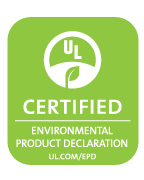

It’s a great time to be a green manufacturer. Environmental consciousness continues to grow, not just here in the U.S. but globally. Consumers realize that there are more than a few reasons to purchase a green product. It may be good for the environment, but it’s also often perceived as good for their families and their communities' wellbeing. But for many manufacturers, figuring out how to correctly communicate the sustainable benefits of a product is still a challenge. Social media is great for marketing, and promoting the products through ads and smart packaging works as well. But how does a manufacturer convince the new mom and dad that the toy hutch they're looking at is safe from volatile organic compound (VOC) emissions, or the eco-conscious restaurant that the pot and pan detergent its considering is made from environmentally safe ingredients? That’s the role of third-party validation systems, said Scot Case. Case serves as the director of Market Development for UL Environment, which provides validation processes for environmental claims. Environmental sustainability, he pointed out, “is a big, all-encompassing (issue) that touches on the human health, environmental and social impacts,” and these days consumers often want to know the fine print behind the claim before they will buy the product. Environmental claim validation tells the consumer – whether he is a customer purchasing from a retail store or a manufacturer purchasing business-to-business – that the environmental statement you are promoting has been investigated and validated by a third party. And consumers often see that third-party process not only as a reassurance of the claim, but a reflection of the integrity of the manufacturer that has invested time and money to validate that claim.
“If you are a manufacturer and you are making some kind of environmental claim, you should be offering consumers proof that the claim is accurate, meaningful and relevant,” Case said.
Unfortunately, many manufacturers don’t. They rely on the power of their statement as assurance that their claim fits those three criteria, leaving it to consumers to determine whether a purchase is worth the investment. Increased vigilance by federal, state and municipal agencies in policing claims that don’t add up provide good support for consumers these days, but “greenwashing” still exists, and so does the consumer’s need to ask for proof. Providing UL Environment’s green-sticker validation, for example, that a play station is LEED certified and has low VOC emissions tells the parent immediately whether that product is worth considering for her child’s bedroom. Registering that building material as having been made with recycled materials reduces the legwork for the builder that markets his business as sustainably focused. But there are other benefits to using environmental validation claims, Case said – benefits that go beyond what the customer sees on the shelf. In fact, customers aren’t the only ones that want to ensure that claims are accurate, meaningful and relevant. The government does as well.
Greenwashing and the FTC
“There have been a number of U.S. Federal Trade Commission investigations about the environmental claims companies are making." Companies for example, that claimed their green products were compostable got into trouble for misleading advertising. Case said consumers misunderstood what the claim meant and, at the end of its lifecycle, threw it into the landfill. To them, “compostable” meant no worries, no muss; it will degrade. “What the FTC has said is that you cannot make a general compostability claim unless it is very clear to the consumer that the product has to be segregated from the regular trash and must be shipped to ... an institutional composter where the product will in fact, compost,” Case explained. Validating an environmental claim means manufacturers have accurate information at their fingertips about federal laws, expectations and procedures. Case calls this process a “a magic secret sauce of accurate scientific claims, and understanding consumer perceptions” that is critical to business success. Manufacturers not only have to stay abreast of the requirements of certain claims, but also understand just what the consumer sees when he is looking at that green product. With the technological advance of third-party validation systems, information can be tailored to be as specific as necessary. A manufacturer who has a new organic, environmentally sustainable personal care product in mind, for example, can find out whether the ingredients she wants to use will be permitted in California or in Canada, where consumer laws differ from say, Iowa. And the system also supports the retailer that is looking at purchasing the product to sell in his store.
Validation, transparency and doing it well
“[By] collecting, for example, the chemical formula for a shampoo, we can put all of that information into our transparency platform tools and let a retailer know if you can sell that product in Iowa, in California. Can you sell it in Europe; can you sell it in Japan? So, what we’re doing is making it easier for companies to understand what the rules are all over the world." Transparency in product manufacturing, Case says, not only makes it easier for the consumer to purchase confidently, but also strengthens the environmentally sustainable marketplace -- making it easier for manufacturers, retailers and consumers to support a vibrant ecology.
“[It] is a wonderful time to be a green consumer,” Case noted. “And if you are an environmental leadership company, it’s a great time to try and be promoting that and really gain market share. Because ultimately, we really want to see the green guys win."
More information about federal laws and definitions of green product marketing can be found at the Federal Trade Commission's Green Guides website. Or for the less dry version, check out SinsofGreenwashing. To get a sense of how well you can identify "greenwashing" try UL's informative game. Images courtesy of UL.
U.N. Global Compact Addresses Sustainable Development in Africa
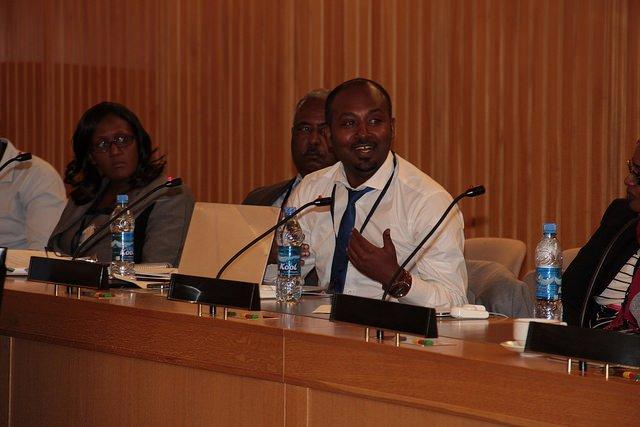

By Michael Kourabas
Last week, 20 CEOs of Ethiopian companies gathered at the United Nations Global Compact's (UNGC) CEO Roundtable on Corporate Sustainability in Ethiopia. The event was part of “Africa: Advancing Partnerships and Responsible Business Leadership,” a week-long conference co-sponsored by the UNGC. Held in Ethiopia’s capital, Addis Ababa, it aims to promote corporate social responsibility (CSR) in Africa and explore partnerships between the U.N. and the public and private sectors to advance sustainable development in the region.
Topics covered in the roundtable included women’s empowerment, “decent work,” education and job creation. The event was touted by the UNGC as evidence of a renewed “commitment” to sustainability among Ethiopian companies and roughly coincided with the release of the UNGC’s new Africa Strategy document, Partners in Change: U.N. Global Compact Advancing Corporate Sustainability in Africa, which will serve as the UNGC’s overarching plan of action in the region.
There’s good reason for the attention on CSR in Africa. First, according to the Africa Strategy document, by 2050 Africa will have the world’s largest workforce and will account for 25 percent of the world’s population, growing at a faster rate than every other region in the world. Second, despite this growth, “only one-quarter of the top 50 African companies in 2012 are or have been Global Compact participants,” leaving ample room for improvement. Third, according to the International Finance Corp., the private sector accounts for roughly 90 percent of employment in Africa. All of these facts, particularly when considered in conjunction with Africa’s persistent governance problems, lead inexorably to the conclusion that private industry in Africa -- as opposed to government -- holds the key to sustainable development in the region. For its part, the UNGC views its role in Africa as “paramount to creating the bedrock of social norms that move businesses beyond ‘Do no harm’ principles and towards a greater understanding of how the private sector can contribute to sustainable growth through responsible business.”
The elephant in the room, of course, is China. Over the last decade, China’s two-way trade with Africa has grown by a remarkable 30 percent each year, and it is now Africa’s largest trading partner -- a title it has held since 2009. The sheer increase in trade volume is staggering. In 2000, bilateral trade between China and Africa was roughly $11 billion; by 2006, the figure had increased almost six-fold to nearly $60 billion. Last year? Bilateral trade between China and Africa reached $210 billion.
Investment by China in Africa has also skyrocketed, rising some thirty-fold in the past 1o years; and, according to Al Jazeera, foreign direct investment by China in Africa went from $500 million in 2003 to almost $15 billion by 2012. Last year, China pledged $20 billion in loans for infrastructure development. In other words, sustainable development in Africa will be nearly impossible without Chinese cooperation.
Yet, as China has (strategically) sprinkled new sports stadiums and infrastructure projects, like highways and hospitals, around the African continent, many African countries have been left “saddled with heavy debts and other problems, from environmental conflict to labor strife.” As former Secretary of State Hillary Clinton once noted, Africa needs “a model of sustainable partnership that adds value, rather than extracts it.”
It should come as no surprise that China has not always been a model of social responsibility in Africa. For instance, last year the Guardian exposed the existence of illegal Chinese gold-mining operations in Ghana and documented widespread excavation, toxic chemical use and alleged human rights abuses at the mining sites. This prompted the Ghanaian government to establish a mining task force, leading to the eventual deportation of thousands of illegal Chinese workers and alleged retaliation from Beijing.
Of course, Chinese investment is a potential boon to the continent, which is in dire need of infrastructure improvement. With increased oversight by African governments -- and a watchful eye by a burgeoning civil society sector -- Chinese investment can continue, but in a controlled and responsible way. The UNGC’s Africa Strategy deals exclusively with the roles of individual African countries, in partnership with the UNGC and its “local networks,” and there is no mention of China in the document. What role China has to play in sustainable development in Africa remains to be seen, but commitments by African companies -- such as those made in Ethiopia last week -- are nevertheless a crucial step in the right direction.
Image credit: Daniel Debebe Negatu/U.N. Global Compact via Flickr
Ethical Tea Partnership, Oxfam Lead Campaign for a Living Wage
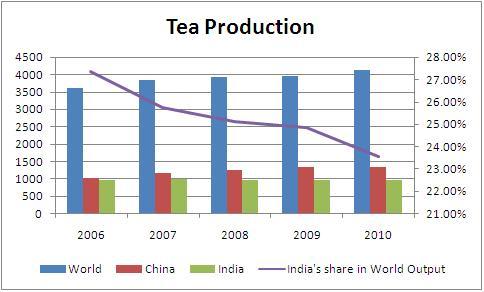

The minimum wage, and the difference between earning a minimum versus a living wage, has moved to the forefront of the civic mind and politics in the U.S. recently. With income and wealth disparities at historically wide levels, President Barack Obama continues his campaign to raise the federal minimum wage. Seattle's city government recently voted to raise the municipal minimum wage to $15, while fast food workers and public interest groups have been putting pressure on some of America's -- and the world's -- largest employers, such as McDonald's and Walmart, to follow suit.
A fair, living wage is considered a fundamental human right by the U.N. While this issue has only really come to the fore in the U.S. over the course of the past decade, it has long been an issue in developing countries. For developing and less developed countries, cheap access to natural resources has been touted as a keystone of economic development, while for industrially developed nations it has been a linchpin of economic growth and globalization.
Tea estate workers offer a case in point. Though it is the most popular drink in the world, other than water, tea is typically grown in poor countries. And while those countries have set minimum wages for tea estate workers, those often aren't even high enough to be considered a living wage. A coalition of organizations led by Oxfam and the Ethical Tea Partnership is out to change that.
The strategic campaign to bring living wages to tea workers
With the support of Unilever, sustainable trade initiative IDH, and certification organizations Fairtrade International, Rainforest Alliance and Utz Certified, Oxfam and ETP in 2011 undertook an in-depth analysis of the wages and benefits being paid to tea estate workers in India, Indonesia and Malawi.
The study, entitled Understanding Wages in the Tea Industry, revealed “systemic problems locking in low wages” among tea estate workers. Among the key findings:
- Pay is set at national or regional level.
- Wages are influenced by government policies to maximize rural employment by setting fixed numbers of workers for each estate, therefore reducing employers' ability to manage productivity and costs.
- 'In-kind' benefits such as housing can form a big share of workers' income, but these vary significantly between estates; and most workers have little say in apy and benefit negotiations.
Additionally, researchers found that as a result of minimum wages being established nationally or regionally as opposed to being set by individual companies or estates, certification standards reference minimum wages rather than living wages.
Based on these findings, Oxfam, ETP, IDH and German development agency GIZ “are leading a strategic coalition, which aims to make progress towards a living wage for tea workers and living income for smallholders, enabling all those working in the industry to live dignified lives.”
The coalition will focus its campaign on the southeast African nation of Malawi before moving on to other countries.
Commenting on the composition of the campaign partnership:
“The coalition brings together the wide range of organizations that is needed to find solutions to the systemic problems identified in the 2013 report including global tea companies, such as Twinings, Tata Global Beverages (which produces the Tetley brand of teas), Taylors of Harrogate (producers of Yorkshire Tea), DE Master Blenders and Unilever (the makers of PG Tips), retailers such as Tesco and Marks & Spencer, governments, trade unions and NGOs.”
Anticipated to stretch over a period of years, the living wage for tea workers campaign partners “will work on a number of different levers for change.” These include:
- Assisting tea estates to improve their productivity and profits, making more finance available for investment and providing business support, linked to a commitment to raise wages;
- Working with employers, unions and governments to improve the process by which wages are set, increasing worker representation and agreeing phased improvements;
- Training smallholders in good farming practices and giving them access to affordable finance so they can improve quality and productivity, and therefore income;
- Improving workers’ living standards and working conditions by running programs to improve nutrition, combat discrimination and harassment, develop employment skills and make banking facilities available.
Oakland City Council Moves on Coal Transport Ban


The Oakland City Council just approved resolutions opposing the transportation of coal and other fossil fuels in Oakland and the East Bay.
The council unanimously approved the resolutions by consent Tuesday evening, citing the problems with using coal trains through the urban area. Such problems included environmental threats, public health hazards, economic pitfalls, and public opposition to exports, specifically coal.
Another resolution declares a “city policy prohibiting the investment of city funds or holding any investment or ownership stake in any companies that extract, produce, refine, burn or distribute fossil fuels,” and urges other nearby local jurisdictions to “divest from all publicly-traded fossil fuel companies, all in an effort to support the goals of the Oakland energy and climate action plan and diminish the use of fossil fuels that significantly contribute to climate change.”
Passage of the measure, written by council members Dan Kalb, Lynette Gibson McElhaney and Rebecca Kaplan, means Oakland joins Berkeley and Richmond, California in opposing the shipment of crude oil and coal on railroad tracks through their communities.
Cities do not have the power to prohibit these shipments because only the federal government can regulate railroads, so it’s an easy stance to take — it’s a resolution not a law.
However, fierce local opposition to fossil fuel exports carried on trains through West Coast port areas is putting a severe crimp in those plans. “From California to Oregon to Washington, local communities are holding the line in the fight against dirty coal exports. We still have more work to do here in the Bay Area, but (the) decision shows that Oakland’s leadership is committed to safeguarding clean air, clean water, and public health for our communities,” said Michelle Myers, director of the Sierra Club’s San Francisco Bay Chapter.
Sierra Club noted that due to strong community organizing, coal, petcoke and oil export facilities “have been unable to move forward along much of the West Coast.” Other communities in California have passed similar resolutions regarding oil transport, including Berkeley and Richmond. The San Francisco Environment Commission also unanimously passed a resolution to work with the city and port on crafting a policy to ban the exports of coal, oil and petcoke.
Coal dust and diesel particulate matter from the numerous open-top, mile-long trains used to transport these commodities would pose significant air and water quality threats to Bay Area families, the organization continued. “On average, the BNSF estimates that each uncovered rail car can potentially lose up to 500 pounds of coal per trip, or more than 60,000 pounds lost per train. Coal breaks apart easily to create dust that contains lead, arsenic, uranium, and hundreds of other heavy metal toxins harmful to fish and human health. Coal dust also can contribute to train derailments."
"The number of mile-long coal, petcoke and oil trains passing through our community is expected to rise dramatically,” said Brian Beveridge of the West Oakland Environmental Indicators Project. “Those coal and oil trains will pass thousands of homes from San Leandro to Martinez to Berkeley to Oakland. An accident along this route could deliver incredible damage to lives and property. We applaud Oakland’s steps towards opposing the dangerous transport of these fossil fuels.”
Pretty soon the fossil-fuel industry will run out of convenient, agreeable and economically viable options to transport their hazardous products — and that will be an excellent thing.
Image credit: Flickr/redarrow101
Climate Change Threatens Sri Lanka’s Tea Industry

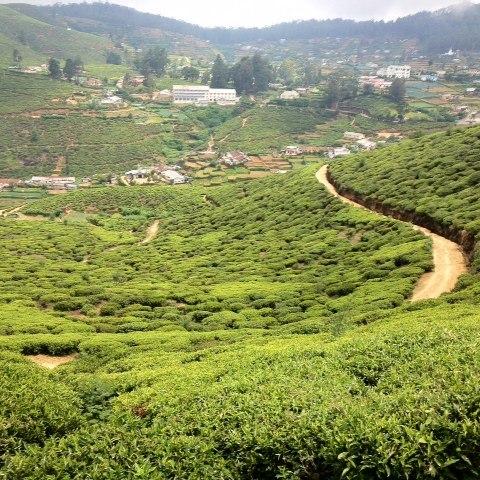
Few crops have transformed countries the way tea has changed Sri Lanka. Long after the first tea plant from China was planted in Sri Lanka 190 years ago, tea now grows on 3 percent of the island, provides 2.5 percent of the nation’s GDP and generates income for over 1 million Sri Lankans. In southern Sri Lanka, tea dominates the landscape: once lush rain forests are huge estates surrounding popular tourist destinations such as Nuwara Eliya, Ella and Haputale.
Now, along with other major tea growers, the Sri Lankan tea industry faces an uncertain future due to climate change. Pests and volatile weather patterns threaten an industry already beset by increased competition and rising labor costs. Along with other indulgences we take for granted, such as chocolate and coffee, climate change poses the threat of collapse to the tea industry.
When I walked through the tea plantations during a trip to Sri Lanka last month, I needed to be reminded that tea has a relatively short chapter in the country’s 3,000 year history. Coffee and cinnamon were the dominant crops during the first half of the 19th century after the British colonized the island.
But after coffee rust destroyed Sri Lanka’s place as the world’s leading export of coffee during the 1870s, growers and exporters saw another opportunity in tea. Thus even more mountains in Sri Lanka saw rain forest cover replaced with camellia sinesis, from which the leaves and buds are used to brew your cup of tea. The industry expanded even more rapidly after a Scottish fellow named Lipton purchased land in Sri Lanka to grow tea, therefore bypassing the tea wholesalers in London and giving him the ability to sell tea cheaply to the British and American working classes — forever making Sri Lanka synonymous with tea.
Tea’s impact in Sri Lanka has long been breathtaking and backbreaking. I’ve never used the words “verdant” or “bucolic” in my writing, but those words certainly describe what is often called the “hill country” or “tea country” in Sri Lanka. The endless rolling hills full of low-lying tea bushes tease the eye and in turn lure tourists from all over the world. Nuwara Eliya, once center of the British tea industry in Sri Lanka, still grows some of the finest tea on earth—as in other countries, the highest elevations provide optimal conditions for growing tea. As I walked about 15 km one day through the tea estates, I was struck by the beauty—it was easy to forget this was once lush rain forest. And while the mist enveloping the landscape made for great photo opps, it also opened my eyes to the reality of tea production in Sri Lanka.
Here, where tea grows up to 1,800 meters (5,900 feet) above sea level, the routine for the tea workers is hard, tedious labor. The vast majority of them are descendants of the Tamils who the British forcibly relocated from India. Women for the most part pick tea—only young leaves and buds are carefully plucked from the bushes. According to my local host, the wages to pick tea average about 400 rupees (US$3.07) a day—and their daily quotas average from 12 to 15 kilograms (26.5 to 33 pounds). Many grow vegetables to earn some extra income outside their homes, which are often fashioned out of corrugated iron siding. The struggle continues up the tea hierarchy as small and medium and plantation owners feel the sting from growing global competition as well as the plunge of exports to countries in the Middle East hit by war and economic instability. Rising temperatures pose yet another challenge to their way of life.
So do you think these growers and tea pickers think about the long term effects of climate change? I asked several times and was shrugged off. According to my host, life goes on here. Any initial environmental impact of churning forest to tea, such as erosion, has long faded as many of the tea plants in Sri Lanka are well over a century old. Furthermore, whether you are picking the leaves or curing them, working within the tea industry involves long days and intensive labor—many of these workers are simply trying to survive and provide for their families.
Elsewhere in Sri Lanka, business leaders, academics and environmentalists are raising awareness and taking action. Dilmah Teas, a 40-year-old Sri Lankan-owned enterprise, is launching a climate change research station to study the potential impacts of climate change and develop future mitigation strategies. Other companies such as Unilever, which runs an instant tea factory in Sri Lanka, have held events to educate employees on environmental issues such as water conservation. With data suggesting Sri Lanka’s overall temperatures have risen 1 Celsius degree the past century, the possibility of climate change wreaking havoc on this lucrative industry is too big of a risk to overlook.
Solving the emerging tea crisis in Sri Lanka will not be easy. Fair trade certification is one part of the puzzle, as the premiums paid to growers can help address both the social and environmental challenges confronting the tea industry. The Sri Lankan government runs a tea research institute that covers everything from studying the treat of pests to helping tea growers respond and adapt to the changing climate.
But the Sri Lankan tea industry’s biggest challenge is taking on all these changes while still providing a product that can keep it economically viable. Tea drinkers around the world for the most part are used to paying almost nothing for a cuppa. Case in point—after walking around the tea estates in Nuwara Eliya, my host took me to a local shop where I bought a kilo of one of the highest quality teas for 1,000 rupees (US$7.80). Granted, that tea went through a few less steps through the global tea supply chain, but that is almost nothing for a year’s supply or so of tea. The change will have to start with educating consumers—will they be willing to pay more for a more responsible and sustainable product, or will they just sip a brew from China, India or Kenya that is far cheaper?
They may have no choice — cheaper teas are generally grown in low-lying areas that are most susceptible to climate change. Governments and growers will focus on preserving the more lucrative high-end teas that thrive in higher elevations — which means growers closer to sea level may eventually make that painful decision to grow more lucrative crops resistant to climate change and can feed a growing population. So whether you are sipping a quick Lipton at a roadside stand in the Middle East or enjoying high tea at a posh London hotel, tea will be just one more way in which climate change will lighten your wallet.
Image credits: Leon Kaye
Leon Kaye currently lives in the United Arab Emirates, where he works for the Abu Dhabi office of APCO, a communications consultancy. Follow him on Instagram and Twitter.
Former Shell Chairman Criticizes Industry Inaction on Climate


James Smith, as the former chair of Shell U.K. and current chair of the consultancy Carbon Trust, is a man who has looked at the questions of fossil fuel consumption and climate change, in Joni Mitchell’s words, “from both sides now.” Not surprisingly, he has much to say on the subject, informed as he is by his background as both a physicist and a chartered accountant, as well as his experience.
Clearly no climate denier, he told Business Green that, "Climate change is a problem that absolutely must be tackled, and it is a very urgent problem and the longer we leave it the more and more urgent it becomes."
Blending ecological sensitivity with the pragmatism of an oilman, he points out that, "It is going to be hard to kick the fossil fuel habit, because the phenomenal density of fossil fuels is what brought us the industrial revolution."
Smith talks about the “trillionth ton” of carbon emitted into the atmosphere, which is projected to occur by 2040. We need to stop emitting before we get there, but that won’t be easy. Says Smith: "It is an order of magnitude problem. What we need is a unit of economic output for one-third of the energy input and a unit of energy for one-third of the carbon-output. That is the scale of the challenge."
He points out that there are three things that need to be done to address the crisis. "Firstly,” he says, "is energy efficiency in every nook and cranny of the economy -- every device, every building, every piece of equipment we use in industrial processes. Secondly, we have to progress as rapidly as we can on renewable energy – the right kind of renewable energy for the right kind of circumstances.”
But as others have pointed out, these two things might not be enough. And while some have said we need to stick with coal, others look to natural gas and tar sands oil as bridge fuels, and some claim that nuclear power is the only way to fill the gap, Smith has another approach. “We've got to progress on carbon capture and storage. My concern is that understandably there is a lot of excitement and endeavour on the first two of those, less so on the third. But it is the third part that seems to me to be a crucial component of the totality of this."
Because our modern economy was built on fossil fuels and is set up to run on them, the idea of continuing to use them while stripping out the carbon could be the path of least resistance, at least for the short term, if we can figure out how to do it, effectively, efficiently, affordably and safely. The IPCC agrees with his assessment, claiming that it could be the most cost-effective way to bridge the gap.
Is there a way to reduce the gap to zero? Amory Lovins said three years ago that we could get to an 82 percent carbon reduction, without nuclear, while reducing our natural gas consumption by a third. His approach focuses on systemic efficiency. The National Renewable Energy Laboratory (NREL) also said we could produce 80 percent of our electricity from renewables by 2050. In both cases there is still a gap, but technology continues to advance at a dramatic pace with advances in solar efficiency, wind capacity, storage capacity and cost, biofuels (including algae), vehicle fuel economy, and smart and connected cities. The race is on. Meanwhile the ice caps continue to melt, and millions more people around the world are climbing up into the middle class and discovering appetites for energy they never knew they had.
Smith continues to criticize his former colleagues for their reluctance to move on this critical area, calling progress in the area, “unacceptably slow.”
Of course, as a former accountant, he recognizes the financial risk here. The industry could spend billions on this only to find that another approach has emerged to handle the problem. A price on carbon would certainly help make the case. Referring to Shell’s scenarios, he says, “They paint a picture that says what we're doing now is unacceptable.”
What the oil and gas industry should do, he says, is to say that, “There is an unacceptable risk to the environment that has to be dealt with; and saying there is a market failure in the absence of a price of carbon, and that market failure needs to be corrected urgently."
From a technology perspective, the geological carbon storage is first proposed in conjunction with coal-fired electricity. As the FutureGen program continues to move slowly toward a demonstration plant in Meredosia, Illinois, at a cost of $1.65 billion for 200 megawatts, a number of other approaches have been proposed. Just this week, an announcement was made of a collaboration between CO2 Solutions Partners and Neumann Systems to demonstrate a new carbon capture process based on enzymes and utilizing industrial waste heat.
There was also news on a possible financing deal for carbon capture and storage (CCS) in Europe, where concern over energy security has grown after the recent Russian annexation of Crimea. While this could end up being attached to a coal plant in Poland, not all carbon capture efforts are aimed at propping up the dying coal industry. The Peterhead Project, which is, somewhat ironically, being pursued by Shell U.K., is the first application of carbon capture and storage to a natural gas fired power plant. The plant, which is on the Scottish coast, will transport the CO2 by pipeline to a depleted gas reservoir beneath the North Sea.
Image credit: Donna: Flickr Creative Commons
RP Siegel, PE, is an author, inventor and consultant. He has written for numerous publications ranging from Huffington Post to Mechanical Engineering. He and Roger Saillant co-wrote the eco-thriller Vapor Trails. RP sees it as his mission to help articulate and clarify the problems and challenges confronting our planet at this time, as well as the steadily emerging list of proposed solutions. His uniquely combined engineering and humanities background help to bring both global perspective and analytical detail to bear on the questions at hand.
Follow RP Siegel on Twitter.
NGOs Align to Ask #WhatsInYourPaper with Launch of Global Paper Vision


By Dayna Reggero
Collaboration is a beautiful and powerful thing. Today, an international network of more than 120 organizations on six continents is unveiling a new Global Paper Vision that unites the myriad of voices currently challenging the paper industry to adopt more sustainable practices. This Vision is remarkable in its alignment of such diverse and influential organizations from around the world focused on a common goal.
“The Global Paper Vision articulates and focuses our aspirations as a social and environmental movement with millions of members around the world,” says Joshua Martin, Director of the Environmental Paper Network. “This network is a powerful movement for change because it is global, it has a clear vision and it has momentum that is bringing solutions to scale.”
In 2002, an uncommon collection of change-makers converged to combine their diverse expertise, explore their common ground and identify the solutions they could rally around. They eventually coalesced as the Environmental Paper Network and aligned around a common vision for transforming the pulp and paper industry. The advocacy, education, partnerships and campaigns of these organizations created a cascade of consumer support and a critical mass of large-volume purchasers developing voluntary policies. Companies from Staples to Office Depot, from Scholastic to Sprint, from HP to Disney, and hundreds more, have responded to the elevated environmental expectations of consumers.
Martin says: “With new opportunities and new expectations from the marketplace, collaborations between conservation groups and pulp and paper producers developed to find on-the-ground solutions."Multi-stakeholder, landscape level agreements were forged such as the Great Bear Rainforest Agreement and the Boreal Forest Conservation Agreement, and work continues to fully implement them. Former adversaries came together to act as partners such as Greenpeace/Kimberly-Clark and the Dogwood Alliance with Georgia-Pacific and International Paper on forest conservation in the U.S. Southeast.”
The new Vision addresses climate change, human rights and new expectations for corporate transparency. The Vision identifies seven common goals among the organizations that are key objectives for change: reducing consumption; maximizing recycled content; ensuring social responsibility; sourcing fiber responsibly; reducing greenhouse gas emissions; ensuring clean production; and ensuring transparency.
"Paper use has social, environmental, and human rights implications and this vision points at ways to improve them all," adds Saskia Ozinga of FERN in the United Kingdom.
Collectively the signatories commit to developing collaboration and dialogue between NGOs, industry and other institutions; encouraging governments to develop legislative, fiscal and operational measures consistent with the vision; encouraging only responsible investment in the industry; articulating and implementing responsible procurement and purchasing guidance; monitoring the progress of all stakeholders towards the Vision; and campaigning to end socially and environmentally damaging activities by the pulp and paper industry.
Darby Hoover of the Natural Resources Defense Council in the United States adds, “By following the guidance of the Global Paper Vision, paper users can drive the market toward better paper products, which helps to reduce global warming pollution, save forests, conserve water and energy, and divert usable materials from incinerators and landfills.”
The Environmental Paper Network will serve as a hub to facilitate collaboration and dialogue, identify and implement collective actions, host shared resources and monitor progress towards the Vision.
Read the complete Global Paper Vision and a list of signatories: www.environmentalpaper.org/Vision.
The Environmental Paper Network is an international collaborative project of more than 120 organizations working for social and environmental transformation in the production and consumption of pulp and paper. Regional network leadership is provided by committees in North America (environmentalpaper.org), Europe (environmentalpaper.eu) and China (environmentalpaper.cn).
Stress and Anxiety: The Lesser-Known Effects of Climate Change
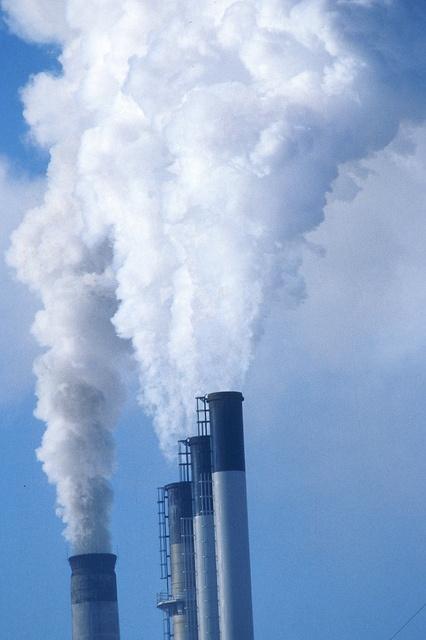

We now know all too well the effects that climate change will have on the environment and society: from making weather events more severe to damaging infrastructure, displacing populations and threatening our food and water supply. But climate change will also have a significant impact on our psychology and well-being, according to a new report from the American Psychological Association, the country’s largest professional organization representing the field of psychology, and ecoAmerica, a nonprofit focused on climate solutions.
Rather than being simply another “doom-and-gloom” study intended to scare unconvinced Americans into acknowledging that climate change is real, the report’s authors hope their findings can help people better understand the phenomenon of climate change, as well as motivate them to take action.
Anxiety, depression, shock, grief and post-traumatic stress disorder – these are some of the mental health consequences for individuals experiencing climate change-related disasters like floods and hurricanes, according to Beyond Storms and Droughts: The Psychological Impacts of Climate Change. One study of flood survivors found that some individuals were having panic attacks, insomnia, low motivation and obsessive behavior long after the natural disaster hit their community.
People exposed to the gradual effects of climate change – increased air pollution, proliferation of disease and food insecurity, to name a few – are at risk for different psychological conditions, the report said. For example, mental health workers have noticed an uptick in substance abuse and the use of mental health programs in Canada’s Inuit community in response to climate change’s gradual impacts. “Ecoanxiety” – a term frequently lampooned by the media – is also a real reaction to changing climatic conditions, according to the report: Many people feel deeply helpless and fatalistic while watching the effects of climate change unfold and worrying about their families’ future.
Droughts – another calamity exacerbated by climate change – are a special type of long-lasting natural disaster that doesn’t quite fit into the categories of acute disaster or gradual impact, the report said. While individuals may withstand a drought well initially, their mental health is likely to deteriorate as the drought persists over time. Droughts affect rural communities more, the report went on to say: One study found an increase in suicide among male farmers during an Australian drought.
The study noted that certain populations are more susceptible to climate change’s psychological impacts: children and seniors, women, and communities with aging infrastructure, high levels of poverty or a lack of health care services.
The psychological well-being of communities can also be affected by the changing climate, the report said, as climate change influences the way community members interact with each other. “Environmental refugees," who are forced to vacate their community after a natural disaster or as climate change makes the environment inhabitable, may lose their feelings of continuity and belonging, one study found.
Communities may see an increase in violence and crime, as food becomes scarce or governments devote more resources to responding to natural disasters, instead of their criminal justice and mental health systems. Some studies suggested that a mere rise in temperature corresponds with an increase in aggression: One researcher predicted that higher global temperatures will lead to an additional 30,000 murders and 3.2 million burglaries during this century.
How the power of positive thinking can combat ecoanxiety
However, the report’s authors concluded on a positive note, with a list of tips to assist sustainability advocates and policymakers in communicating about the impacts of climate change, including the psychological effects, that will help people better understand it and inspire them to take action. Focusing on climate change solutions rather than the problem itself, using hopeful, positive messaging, and avoiding graphic images of climate change’s impacts are some effective ways to educate the public on this environmental crisis, according to the report.
The report also included recommendations for how communities can prepare for the mental health impacts of climate change, aimed at city planners, public health agencies and disaster relief organizations. Suggestions ranged from encouraging community members to add items that promote well-being to their emergency kits – like family photos, games and religious items – to strengthening community infrastructure including transportation, housing and health care to better withstand natural disasters.
The authors of the “Beyond Storms and Droughts” report pointed out that despite the psychological trauma caused by climate change, individuals and communities have the opportunity to transform themselves in positive ways in the face of adversity. For example, a study of low-income mothers who survived Hurricane Katrina found that the simple power of positive thinking helped the women survive and thrive after the disaster.
For individuals, psychologists use the term “post-traumatic growth” to describe the experience of using optimism, flexibility and problem-solving to overcome a difficult situation and feel they have gained something worthwhile, like stronger social relationships or special skills. On a community-scale, I would suggest that the sustainability community already calls this “climate resilience.”
Image credit: Flickr/Wisconsin Department of Natural Resources
Passionate about both writing and sustainability, Alexis Petru is freelance journalist based in the San Francisco Bay Area whose work has appeared on Earth911, Huffington Post and Patch.com. Prior to working as a writer, she coordinated environmental programs for Bay Area cities and counties. Connect with Alexis on Twitter at @alexispetru